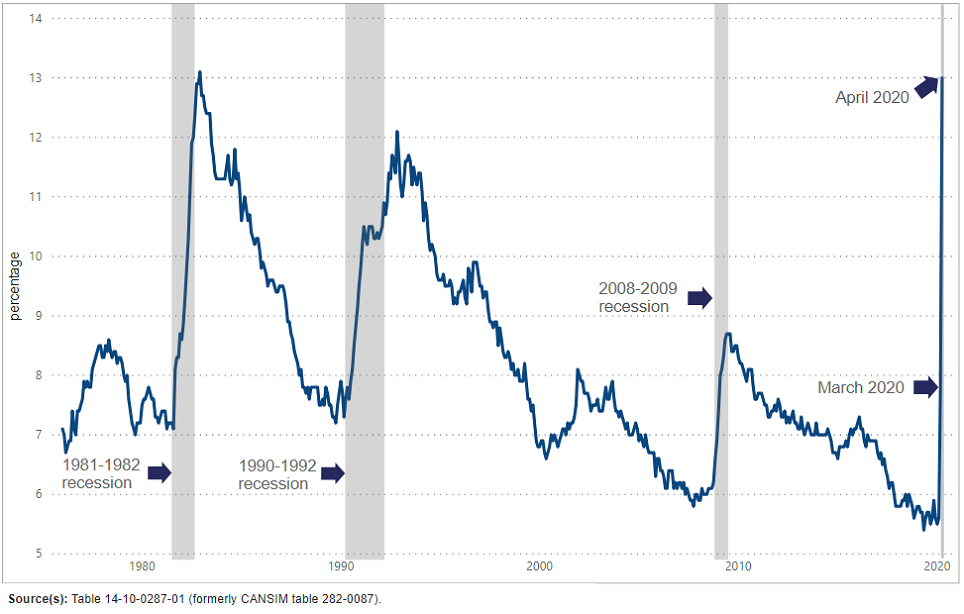Canadian Unemployment Rate Does Not Give The Full Picture Of The COVID-19 Devastation
The Canadian rate of unemployment of 13% for April came as no shock, nonetheless the number seriously belies the devastating impact of COVID-19 on the workplace. At a macro level, the unemployment rate reached levels not seen since the 1981-82 recession, not to mention the speed with which the unemployment rate reached a post-1945 historical high. Going beyond the usual monthly reporting, Statistics Canada looked at several different ways to measure the losses in the labor market. There surveys included additional information related to the nature of job losses, the ability to withstand income losses, and how different segments of the market are affected by the shutdown.
Unemployment Rates During Major Recessions, Canada 1981-2020
(Click on image to enlarge)

The more important findings reveal a labor market that has seriously been damaged in a record time. Note that:
- Impact on the potential economic output. More than 1/3 of the labor force did not work or worked less than half of their regular hours; the shutdown went beyond those who actually lost jobs to include to those whose hours and incomes were curtailed; so, even many of those who kept their jobs suffered income losses; it is estimated that 2.5 million Canadians worked less than half of their regular hours.
- Cumulatively, 5.5 million Canadians were either not employed or working substantially reduced hours or more than one-quarter of February's employment level.
- Over a 1 million people were discouraged from looking for work; these workers essentially dropped out of the workforce, knowing that businesses were shut down and likely that there were no work opportunities for them to pursue;
- Since February full-time and part-time losses were 2 million and 1 million respectively; the magnitude of this decline is - 16%, triple that experienced in the 1981-82 recession;
- Losses were heaviest in jobs offering least degree of security, including temporary workers, the unskilled and those in non-unionized jobs; and
- Over 1.6 million additional people are now living in households where no one employed.
Today’s labor market, once we drill down, reveals a degree of hardship that has not been experienced in our lifetime. More to the point, it is not likely that this damage will be repaired completely or readily as we open up the economy.




nice comment, but depressingly accurate
I had to pour a large scotch after wrote it.